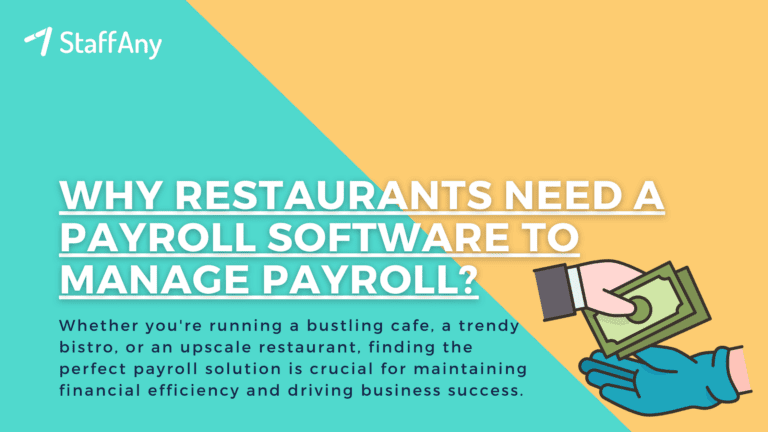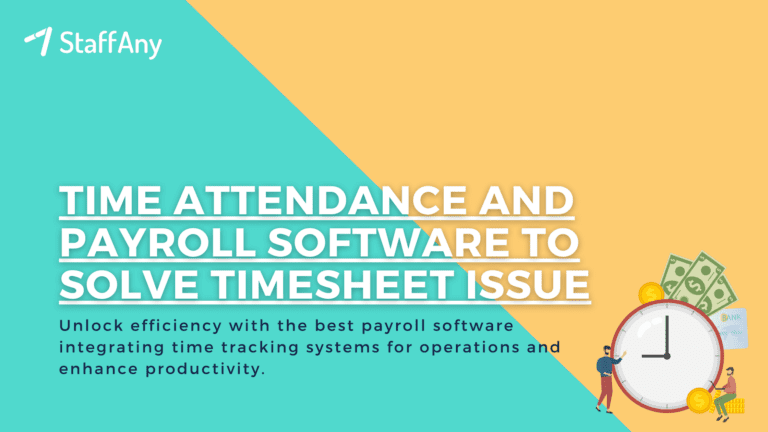In today’s rapidly evolving business landscape, the significance of an effective loyalty programs in restaurant cannot be overstated. Restaurants rely on customer loyalty for their continued existence. It’s the repeat patrons, not occasional visitors, that play a vital role in sustaining your restaurant’s success
In this article, we will explore the various loyalty programs in restaurants that can improve business productivity in 2024 and highlight their importance and benefits. Let’s get started!
What Does Loyalty Programs in Restaurants Mean?

A loyalty program in restaurants is a marketing strategy designed to retain and reward customers for their repeat business and loyalty to the restaurant. These programs encourage customers to return to the restaurant regularly, spend more, and often bring in new customers through referrals.
Because acquiring new customers can be expensive, maintaining existing ones is a vital strategy for optimizing profitability. Typically, loyal repeat customers produce 10 times more lifetime revenue compared to new customers.
Furthermore, a significant portion of your total revenue, specifically 80%, comes from just 20% of your customer base. Therefore, it’s crucial to provide exceptional service to these top customers and ensure their continued patronage.
Read more: How to Establish Effective Workplace Communication
Why are Loyalty Programs in Restaurants Important?
Loyalty programs in restaurants are important because they contribute to customer retention, revenue growth, competitive advantage, and data-driven marketing.
They enhance customer engagement and provide valuable insights that can drive improvements in your restaurant’s offerings and operations. When well-designed and effectively managed, loyalty programs can be a win-win for both the restaurant and its patrons.
Let’s delve into several compelling reasons why these programs hold such significance:
1. Customer Retention
Loyalty programs are designed to reward and incentivize repeat business. By offering rewards, discounts, or other perks, these programs encourage customers to keep coming back to the same restaurant. This, in turn, leads to increased customer retention, which is more cost-effective than constantly acquiring new customers.
2. Increased Revenue
Repeat customers tend to spend more than one-time visitors. Loyalty programs can motivate customers to visit more frequently, order additional items, or bring friends and family along, resulting in higher average transaction values and increased revenue for the restaurant.
3. Competitive Advantage
In a highly competitive restaurant industry, loyalty programs can help differentiate your establishment from others. Customers often choose where to dine based on the incentives and rewards offered by a restaurant’s loyalty program, giving you a competitive edge.
4. Word-of-Mouth Marketing
Satisfied and loyal customers are more likely to recommend your restaurant to others. Loyalty programs that include referral rewards can turn your loyal customers into brand advocates, helping you acquire new patrons through word-of-mouth marketing.
5. Customer Data and Insights
Loyalty programs collect valuable customer data, including purchase history, preferences, and contact information. This data can be used to personalize marketing efforts, tailor menu offerings, and make informed decisions about restaurant operations.
Read more: The Importance of Workplace Safety in F&B
6. Targeted Marketing
With customer data at your disposal, you can send targeted promotions and offers to specific customer segments. This ensures that your marketing efforts are more effective and efficient, as they reach individuals who are more likely to engage with your restaurant.
7. Customer Engagement
Loyalty programs foster engagement with your brand. Customers who participate in these programs often feel a stronger connection to your restaurant, leading to a sense of loyalty and emotional attachment.
8. Feedback and Improvement
Loyalty programs can serve as a feedback mechanism. Customers may provide feedback through surveys or app reviews, enabling you to identify areas for improvement and enhance the overall dining experience.
9. Data-Driven Decision-Making
The insights derived from loyalty program data can inform strategic decisions, such as menu changes, pricing adjustments, and marketing campaigns. This data-driven approach can lead to more informed and profitable choices.
10. Cost Savings
It is typically more cost-effective to retain existing customers than to acquire new ones. Loyalty programs help reduce customer churn and the associated costs of constantly attracting new diners.
11. Customer Loyalty in Competitive Markets
In markets where there are numerous dining options, loyalty programs can be a powerful tool for maintaining a dedicated customer base. These programs create a sense of belonging and loyalty, making it less likely for customers to switch to competitors.
Read more: Employee Assistance Programs: Definition and Benefit
Types of Loyalty Programs for Restaurant in 2024
Restaurant loyalty programs can help build a strong customer base, increase revenue, and foster a sense of community around your establishment. The key is to tailor the program to your restaurant’s brand and customer preferences while providing tangible and appealing rewards.Here are some examples of loyalty programs commonly used in restaurants::
1. Points-Based Loyalty Program
How It Works: Customers earn points for each visit or purchase they make at the restaurant. Once they accumulate a certain number of points, they can redeem them for rewards.
Example: A coffee shop may offer 1 point for every dollar spent. After collecting 50 points, customers can get a free coffee or pastry of their choice.
2. Discount or Cashback Program
How It Works: Customers receive a discount or cashback on their purchases after reaching a certain spending threshold or making a specified number of visits.
Example: A pizza restaurant might offer a 10% discount on the customer’s next order after spending $100 or more over multiple visits.
3. Frequency-Based Program
How It Works: Customers receive a reward for visiting the restaurant a certain number of times within a defined period.
Example: A sushi restaurant might offer a free appetizer to customers who dine in three times within a month.
4. Tiered Loyalty Program
How It Works: Customers are divided into tiers (e.g., silver, gold, platinum) based on their loyalty and spending. Each tier offers progressively better rewards and benefits.
Example: A steakhouse may have a silver tier for occasional diners, a gold tier for regulars, and a platinum tier for frequent customers. Platinum members get priority reservations, exclusive menu items, and birthday gifts.
5. Referral Program
How It Works: Customers are rewarded for referring friends, family, or colleagues to the restaurant.
Example: A Mexican restaurant might offer a free dessert to customers who refer a friend, and the friend also gets a discount on their first visit.
Read more: 8 Training Program for Restaurant Staff Productivity
6. Birthday and Anniversary Rewards
How It Works: Customers receive special offers or free items on their birthdays or anniversaries.
Example: A family restaurant might offer a complimentary dessert or a discount on the total bill for customers celebrating their birthdays at the restaurant.
7. Mobile Apps and Digital Loyalty Programs
How It Works: Customers download a restaurant’s mobile app or sign up for a digital loyalty program to access exclusive deals, earn rewards, and receive personalized offers.
Example: A burger chain’s mobile app allows customers to order ahead, earn points for purchases, and receive notifications about special promotions.
Ways to Increase Restaurant Customer Loyalty
Upon understanding some examples of restaurant loyalty programs, you may consider that increasing customer loyalty in a restaurant involves creative strategies including creating positive experiences, building strong relationships, and providing value that encourages patrons to return. Here are several strategies to boost restaurant customer loyalty:
1. Exceptional Customer Service
Deliver consistently excellent customer service. Train staff to be attentive, friendly, and responsive to customer needs. A positive dining experience contributes significantly to customer loyalty.
2. Personalized Experiences
Tailor experiences to individual customers. Remember preferences, such as favorite dishes or seating arrangements, and use this information to create a more personalized and memorable dining experience.
3. Consistent Quality
Maintain consistent quality in both food and service. Customers should trust that each visit will meet their expectations, ensuring they are more likely to return.
4. Social Media Engagement
Actively engage with customers on social media platforms. Respond to reviews, share user-generated content, and use these channels to promote special offers or events. Social media provides a direct line of communication with your customer base.
5. Feedback and Improvement
Encourage feedback from customers and use it constructively. Regularly assess reviews, both positive and negative, and make improvements based on customer input. This demonstrates a commitment to customer satisfaction.
6. Community Involvement
Engage with the local community. Sponsor local events, participate in fundraisers, or collaborate with nearby businesses. Building a positive presence in the community can foster a sense of loyalty among customers.
7. Surprise and Delight
Occasionally surprise customers with special treats, complimentary items, or exclusive offers. These unexpected gestures create positive emotions and contribute to a memorable dining experience.
8. Effective Communication
Keep customers informed about special promotions, new menu items, or upcoming events through various communication channels, such as email newsletters or SMS alerts. Regular communication helps maintain top-of-mind awareness.
9. Online Presence and Ordering
Enhance your online presence, including a user-friendly website and a presence on food delivery platforms. Offering online ordering and delivery services can increase convenience for customers, making them more likely to choose your restaurant.
10. Consistent Branding
Maintain a consistent brand image across all touchpoints, including signage, menus, and online platforms. A cohesive brand identity contributes to customer recognition and loyalty.
11. Employee Training
Train staff to understand the importance of customer loyalty. Frontline employees play a crucial role in creating positive impressions and building relationships with customers.
12. Special Events and Promotions
Host special events, theme nights, or promotions to create excitement and attract repeat customers. Limited-time offers or exclusive events can create a sense of urgency and encourage customers to return.
13. Convenience and Flexibility
Prioritize convenience by offering flexible dining options, such as takeout, curbside pickup, and delivery. Accommodating various customer preferences increases loyalty.
By combining these strategies, a restaurant can create a positive and memorable experience for customers, encouraging them to become repeat patrons and advocates for the establishment. Focusing on repeat business from loyal customers is one of the easiest ways to make more sales. However, building customer loyalty is an ongoing process that requires attention to customer preferences and a commitment to continuous improvement.
Read more: 10 Pro Tips for Effective Workplace Communication
Streamline your Restaurant Operational with Scheduling Staff Software
In the fast-paced and competitive professional landscape, investing in robust loyalty programs in restaurants is a strategic imperative. The diverse programs types mentioned above showcase the comprehensive approach organisations must adopt to foster an adaptability . As businesses continue to evolve, so must their employees, and the power of a well-designed loyalty program cannot be underestimated.
To ensure a seamless management of these diverse programs initiatives and the efficient scheduling of staff, consider leveraging modern tools like StaffAny, a cutting-edge roster making app that streamlines scheduling processes, enhances organisational efficiency, and empowers your management team to focus on what truly matters—maintain a productive and harmonious work environment. Contact us to learn more!











